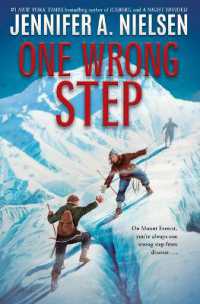Full Description
Today, like no other time in our history, the threat of misinformation and disinformation is at an all-time high. This is also true in the field of Education. Misinformation refers to false information shared by a source who intends to inform, but is unaware that the information is false, such as when an educator who recommends the use of a learning strategy that is not actually beneficial. Disinformation is false information shared by a source who has the intent to deceive and is aware that the information is false, such as when a politician claim that high-stakes testing will fix K-12 education when in fact there is no evidence to support this practice. This book provides recent examples of how misinformation and disinformation manifest in the field of education and remedies.
Contents
Chapter 1. Misinformation and Disinformation in Education: An Introduction; Panayiota Kendeou, Daniel H. Robinson, and Matthew T. McCrudden.
Section I. Susceptibility To Misinformation In Education.
Chapter 2. Zombie Concepts in Education: Why They Won't Die and Why You Can't Kill Them; Gale M. Sinatra and Neil G. Jacobson.
Chapter 3. Understanding Susceptibility to Educational Inaccuracies: Examining the Likelihood of Adoption Model; Alexandra List and Lisa DaVia Rubenstein.
Chapter 4. Psychological Tribes and Processes: Understanding Why and How Misinformation Persists; Gregory J. Trevors.
Chapter 5. Cognitive Biases in Forensic Science Training and Education; Candice Bridge and Mark Marić.
Chapter 6. Do Individual Differences in Conspiratorial and Political Leanings Influence the Use of Inaccurate Information? David N. Rapp, Megan N. Imundo, and Rebecca M. Adler.
Chapter 7. Educational Muckrakers, Watchdogs, and Whistleblowers; Daniel H. Robinson and Robert A. Bligh.
Chapter 8. Designing Interventions to Combat Misinformation Based on Factors That Increase Susceptibility; Abbey M. Loehr and Andrew C. Butler.
Section II. Practices In The Service Of Reducing Misinformation In Education.
Chapter 9. Modeling the Dissemination of Misinformation Through Discourse Dynamics; Laura K. Allen, Aaron D. Likens, and Danielle S. McNamara.
Chapter 10. A Nation of Curators: Educating Students to be Critical Consumers and Users of Online Information; Jeffrey A. Greene, Brian M. Cartiff, Rebekah F. Duke, and Victor M. Deekens.
Chapter 11. Misinformation in Autism Spectrum Disorder and Education; Jessica Paynter, Ullrich K. H. Ecker, David Trembath, Rhylee Sulek, and Deb Keen.
Chapter 12. From Theory to Practice: Implications of KReC for Designing Effective Learning Environments; Jasmine Kim, Reese Butterfuss, Joseph Aubele, and Panayiota Kendeou.
Chapter 13. How Attempting to Reduce Misconceptions in Psychology Reveals the Challenges of Change; Patricia Kowalski and Annette Taylor.
Chapter 14. Critical Thinking in the Post-Truth Era; Åsa Wikforss.
Chapter 15. Attempting to Reduce Misinformation and Other Inaccuracies in Education; Matthew T. McCrudden.
About the Editors.
About the Contributors.







